You may have decided that the ultra high-tech laser you saw at the last meeting just wasn’t going to happen anytime soon; too many other irons in the fire now to commit to another lease payment. Not to worry—before there were lasers, the mighty electrosurge roamed the earth. Fortunately, they are not extinct. In fact, if you poke around in the closet where you keep things you are not quite ready to chuck, you might just spy one.
I’m hoping after you read this, you’ll consider dusting it off. If, per chance, you never did get around to purchasing one, it is easily obtained without ever having to speak with a finance company. In fact, the one that graces my operatory currently sells for as little as $650, which is ironic considering the tremendous functionality it affords. Yes, some bargains are still available within the dental market.
This article will refer to my use of “monopolar electrosurgery” involving a singular tip from which current emanates, traveling through the body to an indifferent plate positioned behind the patient’s back. Contrast that to “bipolar electrosurgery,” in which the surgical tip includes 2 electrodes: one electrode serves as the cutting tip and the other serves as the indifferent plate. The cost of bipolar units is considerably greater than that of monopolar units. While there are certain advantages to the bipolar system (primarily homeostasis and the ability to work around metal restorations), precision cutting is somewhat more challenging due to the broader, dual-tipped nature of the electrode. For precision cutting and troughing procedures, the monopolar design remains king.1
For the record, “E-surge” and “radiosurgery” are one in the same. The latter term is more of a marketing semantic but stems from the fact that dental E-surge units operate at frequencies ranging from 1.5 to 4.0 MHz. For instance, my unit, the Parkell Semsimatic, operates at 2 MHz, while another popular unit, Ellman’s Dento-surge 90, operates at 3.8 MHz. These are both radio frequencies.
I will purposely avoid all of the mythical bugaboos included in articles regarding “E-surge.” I do so because my own experience finds E-surge to be so utterly simple that to cloud the air with too many cautionary statements would risk scaring away all of the would-be beneficiaries of this tried-and-true dental adjunct. I will instead advise the purchaser to read the manual that comes with the unit and make sure of at least 2 things: first, don’t forget to put the indifferent plate under your patient’s back or shoulder. This will allow smoother, more predictable cuts and reduce the chance of the patient experiencing any discomfort. Second, keep the probe away from metal restorations and bone. With those cautionary statements out of the way, let’s now focus on how I use my E-surge device.
BASIC SET UP
Your E-surge unit must be chairside. If not, you simply won’t use it as frequently as you could or should. Consider it another handpiece that just happens to cut soft tissue instead of tooth. While a myriad of settings are possible, the button I use most is the “on/off” switch. I keep the waveform set to “cut with coagulation” (a logical move; for the techies among you, that’s the “unfiltered fully rectified” waveform) and the power to “7.” I use a long-needle electrode 90% of the time and a narrow loop about 10% of the time.
Despite the multiple uses of the E-surge that have been described in the literature (everything from frenectomies to pulpotomies), I pretty much limit my use to troughing for crown and bridge impressions and tissue sculpting for anterior cosmetic rehabs. This pattern of use finds me using my E-surge on a daily basis.
TO TROUGH OR NOT TO TROUGH? THAT IS THE QUESTION
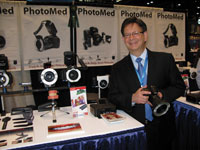 |
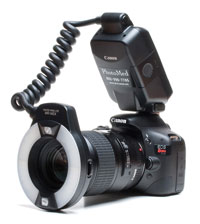 |
| Figure 1. Teeth Nos. 29 and 30, as returned from the endodontist. | Figure 2. Teeth Nos. 29 and 30 cleaned up and ready for E-surge. |
Take a look at Figures 1 and 2 to see how teeth Nos. 29 and 30 were returned to me post-endodontically. The distal margin of tooth No. 30 is somewhat buried, but overall the tissue is attractively pink and reasonably well attached. Situations such as this (nonaesthetic zone, nonvital teeth) pretty much beg for E-surge exposures. Why tamper with the attachment trying to stuff a retraction cord into the tightly bound sulcus?
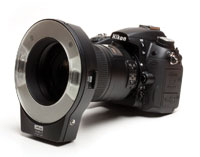 |
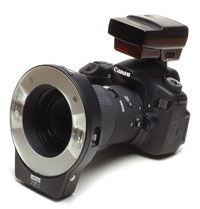 |
| Figure 3. Long-needle electrode creating trough around molar. | Figure 4. Brush&Bond applied to the inner core of the preps. |
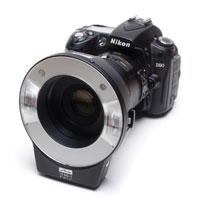 |
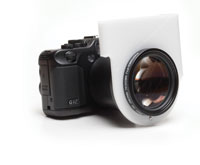 |
| Figure 5. LuxaCore build-up paste applied. | Figure 6. Teeth prepared and E-surge completed. |
 |
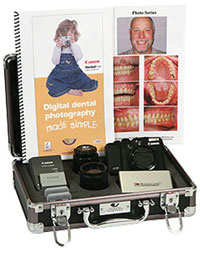 |
| Figure 7. Crystal clear impression. | Figure 8. Crowns delivered. |
In Figure 3 you’ll note my use of the needle electrode to expose teeth Nos. 29 and 30 prior to core placement for maximum visibility. In Figure 4 Parkell Brush&Bond is applied, followed by Zenith/ DMG’s LuxaCore (Figure 5). Figure 6 demonstrates the 2 prepared teeth, while Figure 7 shows an impression that even my mother could read. (No, she’s not a dentist.) Figure 8 demonstrates the finished crowns, tissue healed. Over the years this clinician has come to believe that E-surge might be thought of as a more gentle way to separate tissue from tooth when taking crown impressions. Despite the almost universal use of retraction cord,2 I’ve become convinced that E-surge troughing is in many instances kinder to the tissue than packing cord, despite the sometimes charred look. If the sulcus height is preserved during prep exposure, tissue will almost always regenerate to the preimpression level. Even when tissue height is modestly reduced, it seems to return to physiologic limits so long as a provisional material is not there to block its regrowth (more on this later). Contrast this to the mechanical trauma that often accompanies the dentist’s least favorite task of packing retraction cord, a scenario well-known by our peers to result in tissue recession.3
MORE THAN MEETS THE EYE
My confidence level while using E-surge, and thereby my increased use of it, has been accompanied by an increase in the magnification power of the loupes that I use. This makes sense. A thin wire electrode permits a precision, blood-free cut, undreamed of with a scalpel. But you can’t take advantage of that enhanced control without magnification. When I stepped up from 2.5x to 4.8x magnification, I saw an improvement in my results. Being better able to visualize the exact location of the needle electrode at all times prevents unwanted tissue removal from errant strokes. Some readers may already know that I employ Orascoptic’s EyeMax 4.8 TTL loupes during all operative procedures. How can seeing better NOT elevate one’s level of performance? Is there such a thing as seeing too well? I don’t think so, certainly with respect to things so fine as dental procedures.
On another note, it also helps to know that enamel and dentin are fairly poor conductors of electricity. Thus, while I try to avoid electrode-tooth contact with vital teeth, I don’t panic when the tip momentarily brushes against a tooth surface. As long as the contact is brief, my observation (after accidentally touching more teeth than I’d like to admit over the years) is that the pulps survive just fine.4,5 Needless to say, nonvital preps relieve the apprehension associated with wondering what is happening to the anesthetized pulp.
MUCH TO BE SAID ABOUT STROKES
Well…not really. Again, this is another area that has been made overcomplicated. One simply moves the electrode where one desires the tissue be removed. My usual routine is to plant a solid finger rest with my fourth finger and hold the handpiece like a pencil. I then make short oscillating strokes back and forth in the area that I wish to remove. Such strokes travel 2 to 3 mm. I then inspect the cut and return to areas where small tissue tags might still remain. With my loupes I can easily track the direction of the electrode as it clears its own path. This back-and-forth stroke prevents me from remaining in any one area for too long. There will often be a small amount of charred residue that remains adherent to the margin of the prep. Using a fine diamond or a carbide finishing bur, I’ll clean that up quickly. In today’s world of shoulder based, equigingival crown preparations, one need not create much of a trough in order to expose the margin of your preparation.
I should also mention that there are times when I desire the hemostatic benefits of an episoaked cord (we’ve all been there), and I will simply augment such retraction by using the needle electrode tip in areas where the cord does not appear to have retracted the tissue adequately. This might be only a 3-mm zone of tissue on the mesial-buccal margin of a crown preparation. This final exposure could be the difference between a pristine impression and one on which the lab has to fudge the die trim.
I’ll risk 2 final cautionary statements, the first a repeat: don’t forget the indifferent paddle. The second is this: keep the high-speed suction close to the operative site to control odor. Also, you don’t need plastic mirrors (old myth), and slightly moist tissue cuts better than dry tissue. That’s all you need to cloud your mind with. Let’s talk tissue sculpting now.
SETTING THE STAGE
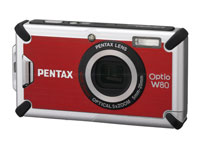 |
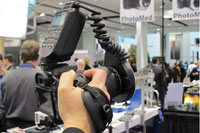 |
| Figure 9. Smile exhibiting considerable redundant tissue. | Figure 10. Periodontal probe assessing gingival tissue available for removal. |
Take a look at the smile in Figure 9. This patient presented wanting her smile improved. Upon examination it was noted that previous treatment had included a 2-unit cantilevered bridge, Nos. 6 and 7, and 4 direct composite veneers, Nos. 8 to 11. It was obvious that hopes of improving this smile depended on creation of more pleasing tissue contours. Gingival probing revealed a fair amount of “extra” gingiva, which if removed would open the door to an attractive smile (Figure 10).
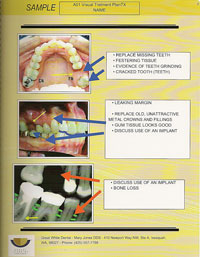 |
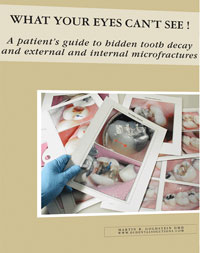 |
| Figure 11. Preoperative portrait as submitted to Smile Vision. | Figure 12. Simulation as presented to patient. |
After gathering all diagnostic data, including a complete set of digital photos, the case was planned and predicated upon E-surge tissue sculpting. Tooth No. 8’s tissue height plus 1 mm would serve as the guide for tissue sculpting of this tooth as well as teeth Nos. 9 and 10. Additionally, ovate pontic form was planned in the No. 7 site. As is typical of such cases, I first obtained a digital smile simulation based on a portrait of the patient. Such simulations are provided to me by Smile Vision (smilevision.net). In this instance the anticipated tissue changes were included in the simulation prescription uploaded to Smile Vision (Figures 11 and 12).
 |
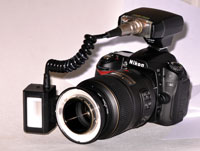 |
| Figure 13. Resin replica mock-up. | Figure 14. Reduction template used to gauge both tissue and tooth removal. |
Following patient approval, a closed-mouth impression was taken using a Premier Alfa Triple Tray and Coltène/Whaledent’s Monobody poly-vinyl siloxane. This approach is fast, well tolerated, and accurate. This impression was sent to Smile Vision, which in turn provided the mock-up shown in Figure 13 as well as the corresponding templates for provisional fabrication and preparation guidance. Built into the prep guide shown in Figure 14 is the planned tissue heights following E-surge. The provisional templates (called hard/soft templates) will allow for temporary fabrication in accordance with the newly created tissue contours.
SHOW TIME
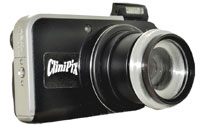 |
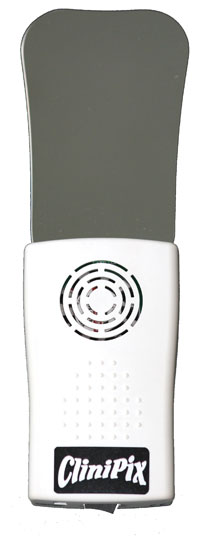 |
| Figure 15. Needle probe used to create more pleasing tissue contours. | Figure 16. Loop electrode used to create ovate pontic site. |
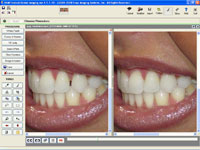 |
| Figure 17. Dental floss used to compare contralateral tissue heights. |
Following local anesthesia, tissue was removed with the Sensimatic needle electrode to a height that left behind 1 to 1.5 mm of gingiva. It is scalloped with the goal of creating a pleasing curve that reaches its apex slightly distal to the midline. This typically requires 10 minutes to complete (Figure 15). Following tooth preparation, a mildly squeezed together loop electrode was used to create an ovate pontic site in the No. 7 region (Figure 16). Figure 17 demonstrates the use of dental floss to compare the relative tissue heights following E-surge. Note the tame look to the sculpted tissue. (If you feel you’ve sufficiently deformed the electrode after this type of use, toss it in favor of a new one.)
 |
| Figure 18. Provisional at 1 month. |
I routinely sculpt the gingiva with my E-surge, prep the tooth, and take the impression all at the same appointment. A carefully fabricated provisional restoration acts as a template to guide tissue recovery. Figure 18 demonstrates the “shrink-wrapped” provisional and tissue contours encountered upon the patient’s return 5 weeks after her impression/tissue-plasty visit. This tissue response is aided by meticulously trimming the provisional at the time of placement to ensure it doesn’t encroach on soft tissue and by the patient’s daily use of Oxyfresh oral rinse (Oxyfresh Worldwide), which is dispensed to the patient after the operative visit. Once again, higher magnification enhances this entire process.
 |
 |
| Figure 19. Ceramic restoration and revamped tissue contours at 3 months. | Figure 20. The transformed smile. |
Figure 19 demonstrates very happy tissue adorned by a 3-unit cantilevered bridge, Nos. 5 to 7 (porcelain fused to metal), as well as a series of porcelain veneers from teeth Nos. 8 to 12 courtesy of Aesthetic Porcelain Studio in Los Angeles. The final reward, of course, is the transformed patient shown in Figure 20, 2 months post case delivery.
There is no doubt in this clinician’s mind that the extra 15 minutes of tissue-plasty carried out prior to impression taking made the success of this case possible.
If all “gummy” cases lent themselves to such E-surge miracles, the cosmetic dental world would be a better place for all. Alas, sometimes the ugly tissue isn’t due to excess gingiva that can easily be corrected with an electrosurge. With a sulcus depth of 1 mm or less, other measures must be taken that involve removal of bone. It’s worth noting that I frequently show patients simulations of smile rehabs in 2 ways: one with simulated tissue changes and the other without. This affords patients the opportunity to preview the effects and in many instances decide whether they wish to pursue more complicated periodontal surgery to obtain the demonstrated result. If they elect the more complex treatment, both simulation and mock-up-based templates can be supplied to the periodontist, enabling him or her to create the desired tissue contours.
ODDS AND ENDS
In a final effort to demystify the E-surge, it must be mentioned that it is unnecessary to place a dressing on the tissue after the type of procedures described in this article. In fact, patient complaints regarding postsurgical pain related to tissue-plasty are for the most part nonexistent. Use of OTC analgesics can be suggested if the need arises, but they will rarely be needed.
One other helpful tip: if during the course of a procedure spot bleeding occurs that you’d like to control quickly with means other than the E-surge itself, 33% hydrogen peroxide (Superoxal, Sultan) applied and rinsed over 5-second intervals will do the trick. The whitish residue left behind will quickly fade.
AND IN CONCLUSION
For those of you who already enjoy the benefits of E-surge, I hope you’ve picked up a few extra pointers that enhance your experience. For those who have abandoned their units, or worse yet, have not been drawn to this tried-and-true practice adjunct, there’s still time to get on board. The learning curve is short while the rewards are long, and as mentioned before, the cost is laughable when compared to the myriad of high-tech gadgets dangled in front of us every day. What are you waiting for?
References
1. Livaditis GJ. Comparison of monopolar and bipolar electrosurgical modes for restorative dentistry: a review of the literature. J Prosthet Dent. 2001;86:390-399.
2. Hansen PA, Tira DE, Barlow J. Current methods of finish-line exposure by practicing prosthodontists. J Prosthodont. 1999;8:163-170.
3. Scott A. Use of an erbium laser in lieu of retraction cord: a modern technique. Gen Dent. 2005;53:116-119.
4. Krejci RF, Reinhardt RA, Wentz FM, et al. Effects of electrosurgery on dog pulps under cervical metallic restorations. Oral Surg Oral Med Oral Pathol. 1982;54:575-582.
5. Robertson PB, Luscher B, Spangberg LS, et al. Pulpal and periodontal effects of electrosurgery involving cervical metallic restorations. Oral Surg Oral Med Oral Pathol. 1978;46:702-710.
Dr. Goldstein practices general dentistry in a group setting in Wolcott, Conn. He serves on the staff of contributing editors at Dentistry Today, is a member of the discussion board panel of experts at dentistrytoday.com, and contributes regularly to multiple dental periodicals. He lectures on both digital photography in dentistry and its use to further the cosmetic and restorative practice. Information on his lecture schedule can be found at drgoldsteinspeaks.com, while information on the “Comfort Zone Cosmetics” seminar series that teaches the veneer technique discussed in this article can be found at smilevision.net. Dr. Goldstein can be contacted at martyg924@cox.net.











